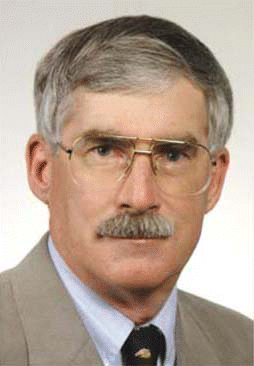The diagnosis of CRS can be very difficult as symptoms may be subtle or resemble those of low grade acute rhinosinusitis. The major symptoms of CRS include facial pressure or pain, nasal obstruction, discharge or purulence, and hyposmia or anosmia that have been continuously present for at least 12 weeks. One sign of inflammation-such as discolored nasal drainage, edema or erythema of the middle meatus or ethmoid bulla, generalized or localized erythema, edema, or granulation tissue, or confirmation from a computed tomography (CT) scan or plain sinus radiograph-must be present and identified in association with ongoing symptoms of chronic rhinosinusitis.
Explore This Issue
April 2006The minor symptoms include fever, halitosis, fatigue and dental pain. The clinical diagnosis relies heavily on the patient history and physical examination and may include nasal endoscopy and CT for confirmation. MRI is not recommended as an alternative for CT as the false positive rate is high.
Until the exact cause for CRS in a patient is determined, physicians too often resort to maximum medical therapy to try and treat it, said Dr. Anon. You can’t tell anyone exactly how to manage CRS since patients are different, the etiology of their disease is different, and physician training is different.
Treatment Guidelines
To help alleviate some of this shotgun approach to treatment, representatives from the Food and Drug Administration; American Academy of Allergy, Asthma and Immunology; American Academy of Otolaryngic Allergy; American Academy of Otolaryngology-Head and Neck Surgery; American College of Allergy, Asthma and Immunology and American Rhinologic Society met together in 2004 to prepare evidence-based rhinosinusitis guidelines.
The resulting report, Rhinosinusitis: Establishing definitions for clinical research and patient care published concurrently as supplements in the Journal of Allergy & Clinical Immunology and Otolaryngology-Head and Neck Surgery, provides the foundation for the 2005 allergy practice parameter update.
ENTs can treat the entire spectrum of CRS. We have the medical and surgical tools in our armamentarium so that patients only have to see one physician. – J. David Osguthorpe, MD
Within this report, no one etiologic factor fully explains or adequately accounts for the pathologic manifestations and clinical differences found in rhinosinusitis. The inflammatory piece of rhinosinusitis is described as a result of mixed mononuclear inflammatory cell infiltrate with neutrophils occurring mostly in the acute disease and eosinophils appearing in chronic disease.
Chronic rhinosinusitis has a significant inflammatory component that may be caused simultaneously or independently by various factors. These include, but are not restricted to, the possible roles of:
- Persistent infection as a factor in chronic rhinosinusitis including biofilms and osteitis;
- Allergy and other disorders of immunity;
- Intrinsic factors of the upper airway;
- Super antigens from Staphylococcus aureus in chronic rhinosinusitis with nasal polyps;
- Colonizing fungi that induce and sustain eosinophilic inflammation; and
- Metabolic perturbations such as aspirin sensitivity.
Cross-Group Consensus
Dr. Osguthorpe told ENToday, because of this joint effort in 2004, both groups now agree that there should be no substantial differences in their medical treatment of CRS. Intranasal corticosteroids are now a common choice as initial therapy reserving antibiotic therapy, the prior mainstay of CRS treatment, for obvious infection.

Leave a Reply